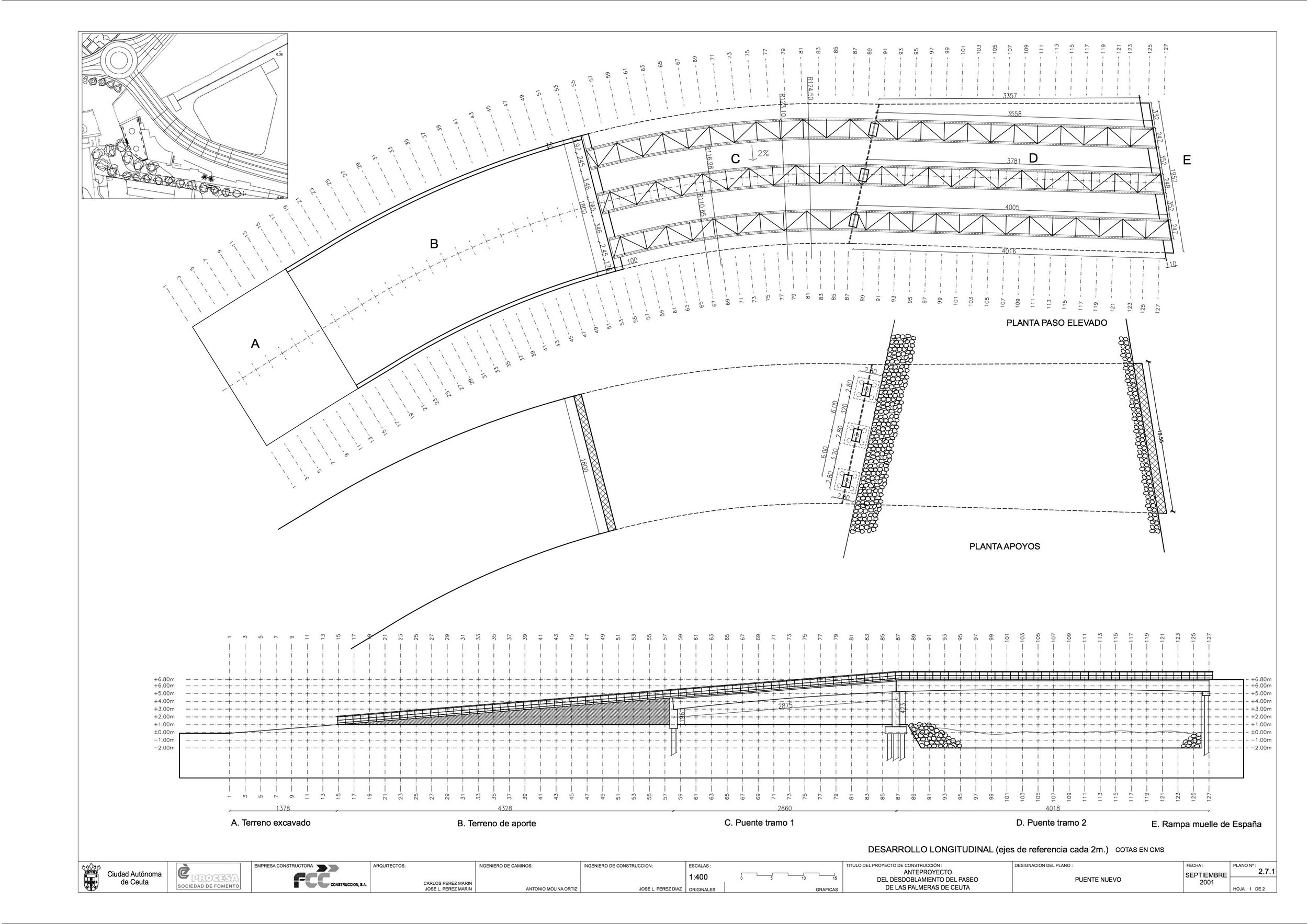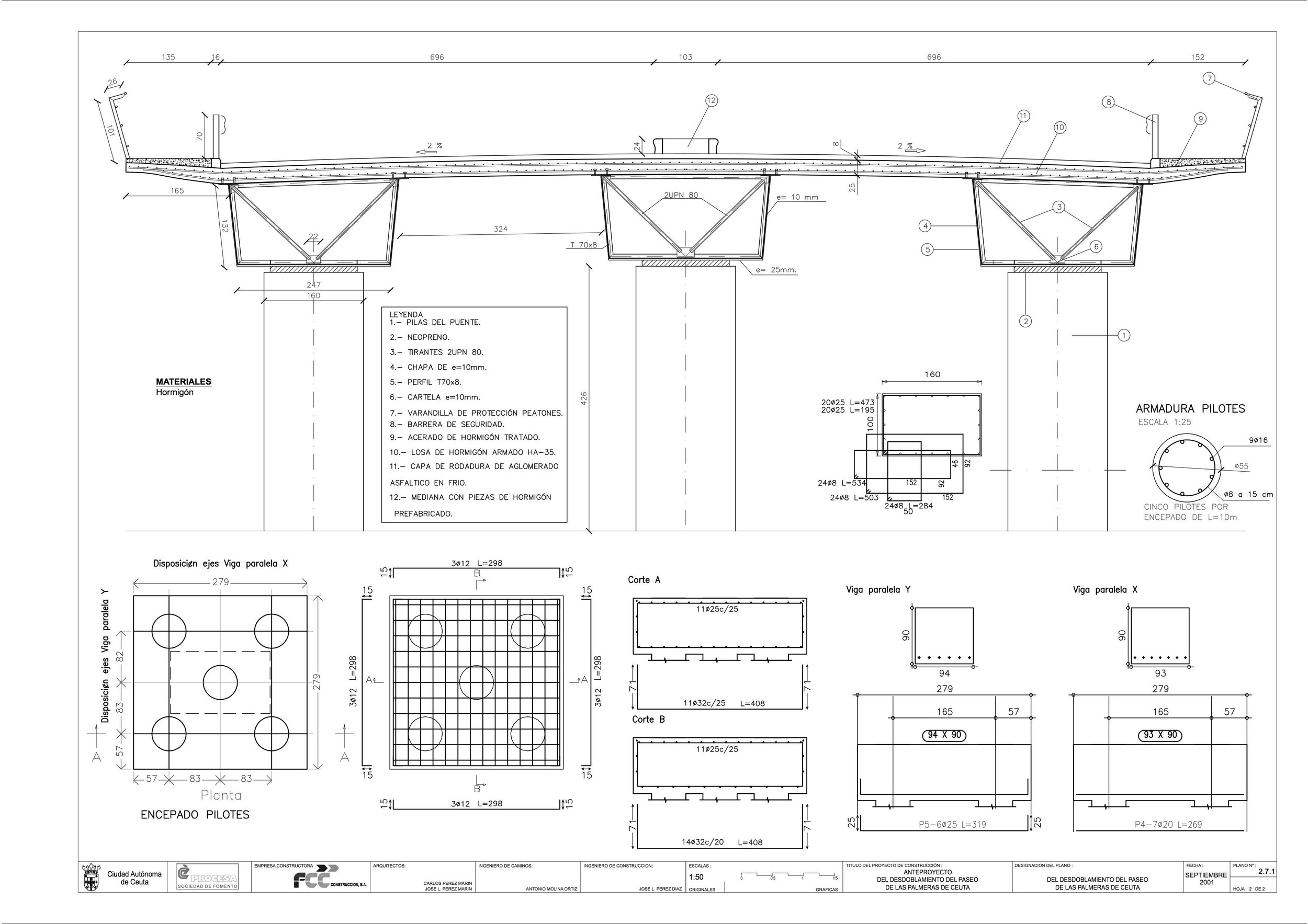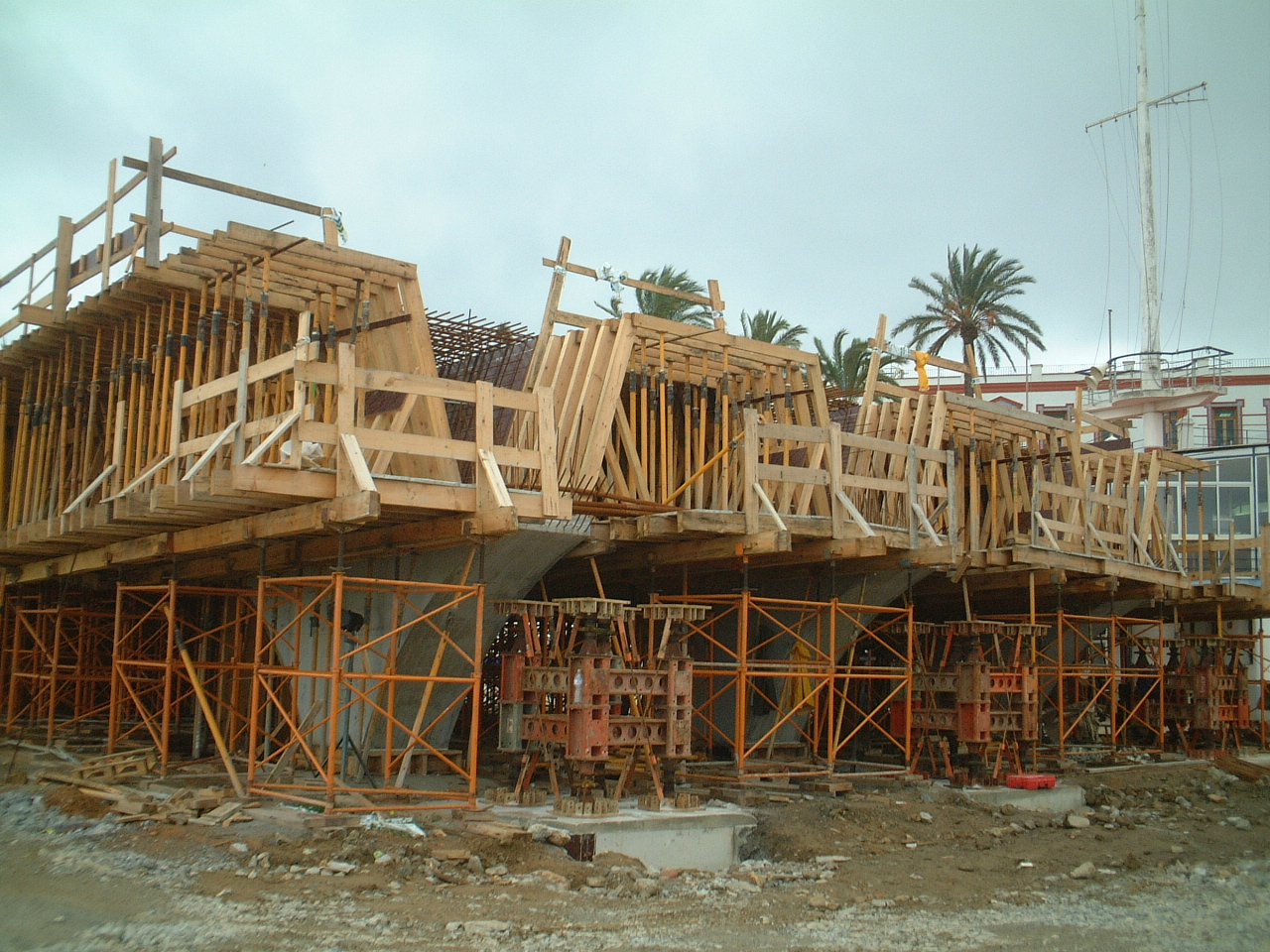Paseo de las Palmeras renovation Ceuta (Spain) 2001/2003 Partners: José Luis Pérez Marín, architect. Antonio Molina Ortiz and Vicente Vicent, engineers. Collaborators: Juan Astorga, Rocío qSalvador, Ismael Martínez, Rocío Martín, Desirée González, Judith Martínez, Nordim Abdesalam, Mayte Martín, Francisco Pantano, architects. Manuel Pérez Marín, quantity surveyor. José Luis Pérez Díaz, engineer. José Luis Gómez Barceló, historian. Ricardo Ugarte, biologist. Younès Rahmoun, visual artist.
bridge/pont/puente
The Royals Walls is the most important fortification we have, that's the reason we didn't want to hide them behind our intervention. Others technical constraints like the clearance height needed by boats to cross the moat and the elevation of the existing intersection, where the new roundabout was planned, didn't let us much option as structural typology. We needed a very flat bridge, which meant a mix one with steel and concret beams and post-tensioned concrete deck. We also had to think how to build it without blocking the moat.
Les Murailles Royales est la fortification la plus importante que nous avons, c'est la raison pour laquelle nous ne voulions pas les cacher derrière notre intervention. D'autres contraintes techniques comme le hauteur libre nécessaire pour que les petits bateaux puissent traverser le fossé et l'élévation de l'intersection existante, où le nouveau rond-point avait été planifié, ne nous ont pas laissé beaucoup d'options par rapport à la typologie structurelle. Nous avions besoin d'un pont très "plat", ce qui signifiait de poutres en acier, en béton et un tablier en béton postcontraint. Nous avons également dû penser comment le construire sans bloquer le fossé.
Las Murallas Reales es la fortificación más importante que tenemos, esa es la razón por la que no queríamos esconderlas detrás de nuestra intervención. Otras restricciones técnicas como la altura libre necesaria para que los barcos pudieran seguir cruzando el foso y la elevación de la intersección existente, donde se construiría la nueva rotonda, no nos dejaba mucha alternativa en cuanto a la tipología estructural. Necesitábamos un puente muy "plano", lo que significaba unas vigas de acero, de hormigón y un tablero de hormigón postensado. También tuvimos que pensar cómo construirlo sin bloquear el paso del foso.
creation



















construction













































































































